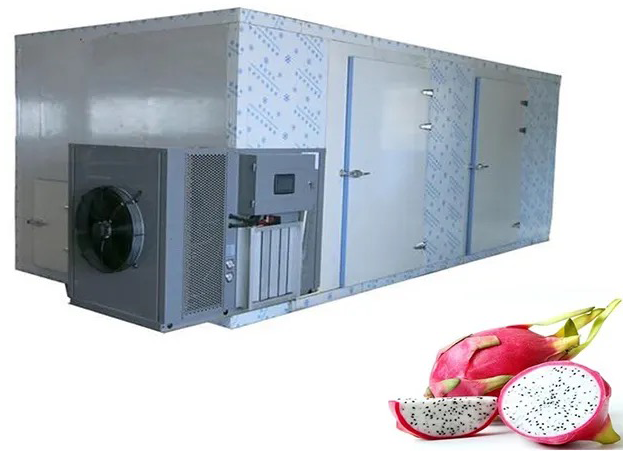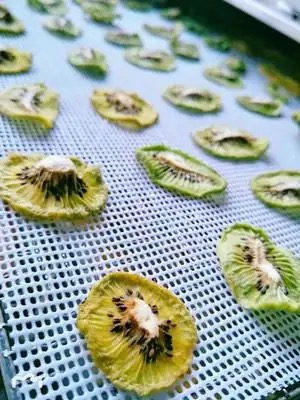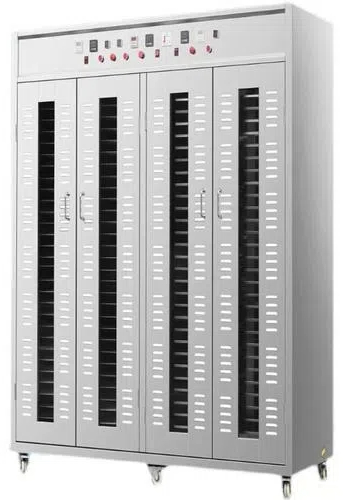
Content Menu
● Understanding Food Drying Machines
>> What is a Heat Pump Dryer?
>> What is a Vented Dryer?
● Heat Pump vs Vented Dryer: Key Comparisons
● Running Costs: A Detailed Analysis
>> Heat Pump Dryer Running Costs
>> Vented Dryer Running Costs
● Performance Comparison
● Advantages of Heat Pump Dryers
● Disadvantages of Heat Pump Dryers
● Advantages of Vented Dryers
● Disadvantages of Vented Dryers
● Additional Considerations for Food Dehydration
>> The Importance of Food Dehydration
>> Versatility in Food Processing
● Innovations in Food Dehydration Technology
● Environmental Impact of Food Dehydration
● Conclusion
● FAQ
>> 1. What is the main difference between heat pump and vented dryers?
>> 2. Are heat pump dryers worth the initial investment?
>> 3. How do running costs compare between these two types?
>> 4. Can I use either type for all food products?
>> 5. Do heat pump dryers require more maintenance than vented models?
In the world of food processing, drying is an essential step that helps preserve food while maintaining its nutritional value. As a manufacturer of food drying machines, understanding the differences between heat pump and vented dryers is crucial for optimizing efficiency and cost-effectiveness. This article explores the advantages and disadvantages of each type of dryer, focusing on their running costs, energy efficiency, and overall performance.

Understanding Food Drying Machines
Food drying machines are designed to remove moisture from food products, extending their shelf life and enhancing flavors. There are various types of food drying machines available in the market, with heat pump and vented dryers being two of the most popular options.
What is a Heat Pump Dryer?
Heat pump dryers utilize a refrigeration cycle to extract moisture from food. They work by drawing in air, heating it, and then circulating it through the food. The moisture-laden air is then cooled, causing the water vapor to condense and be collected. This process is energy-efficient because it reuses heat generated during drying.
What is a Vented Dryer?
Vented dryers operate by blowing hot air through the food to evaporate moisture. The humid air is then expelled outside through a vent. While this method is straightforward and often less expensive upfront, it can be less energy-efficient over time.
Heat Pump vs Vented Dryer: Key Comparisons
| Feature | Heat Pump Dryer | Vented Dryer |
| Initial Cost | Higher initial investment | Lower initial investment |
| Running Costs | Lower due to energy efficiency | Higher due to constant energy use |
| Energy Efficiency | Highly efficient | Less efficient |
| Drying Time | Longer drying cycles | Shorter drying cycles |
| Environmental Impact | Lower due to reduced energy consumption | Higher due to energy waste |
Running Costs: A Detailed Analysis
When considering whether to invest in a heat pump or vented dryer, it's essential to analyze the running costs associated with each type.
Heat Pump Dryer Running Costs
Heat pump dryers are known for their energy efficiency. They typically consume less electricity compared to vented dryers because they recycle heat rather than expelling it. This recycling process means that while the initial cost may be higher, users can expect significant savings on their electricity bills over time.
- Energy Consumption: Heat pump dryers use approximately 50% less energy than traditional vented dryers.
- Cost Savings: If a heat pump dryer costs around $0.20 per load in electricity, a vented dryer may cost about $0.40 or more for the same load.

Vented Dryer Running Costs
Vented dryers tend to have lower upfront costs but can lead to higher running costs due to their inefficiency.
- Energy Consumption: These dryers continuously draw in air and expel hot air, leading to higher electricity usage.
- Cost Implications: Over time, users may find that their electricity bills are significantly higher when using a vented dryer compared to a heat pump dryer.
Performance Comparison
The performance of heat pump and vented dryers varies significantly based on several factors:
- Drying Time: Vented dryers generally have shorter drying times because they produce more heat quickly. However, this speed can come at the cost of energy efficiency.
- Moisture Removal: Heat pump dryers excel at removing moisture evenly without damaging the food product due to their lower temperatures.
- Temperature Control: Heat pump dryers offer better temperature control, which is crucial for sensitive food items that require specific drying conditions.
Advantages of Heat Pump Dryers
1. Energy Efficiency: As previously mentioned, heat pump dryers are significantly more energy-efficient than vented models.
2. Cost Savings Over Time: Although they require a higher initial investment, the long-term savings on energy bills make them an attractive option.
3. Gentle Drying Process: The lower temperatures used in heat pump drying help preserve the quality and nutritional value of food products.
4. Environmentally Friendly: Reduced energy consumption means a smaller carbon footprint.
5. Versatile Applications: Heat pump dryers can be used for various types of food products, including fruits, vegetables, and meats.
Disadvantages of Heat Pump Dryers
1. Higher Initial Cost: The upfront cost can be a barrier for some businesses.
2. Longer Drying Times: While they are gentle on food products, they may take longer to dry compared to vented dryers.
3. Maintenance Requirements: Heat pump systems may require more maintenance due to their complexity.
Advantages of Vented Dryers
1. Lower Initial Cost: Vented dryers are generally cheaper to purchase than heat pump models.
2. Faster Drying Times: They can dry food products more quickly due to higher temperatures.
3. Simplicity of Operation: These machines tend to have simpler designs and fewer components that can fail.
Disadvantages of Vented Dryers
1. Higher Running Costs: Over time, the increased energy consumption can lead to significantly higher operating costs.
2. Less Energy Efficient: They are not as environmentally friendly as heat pump dryers due to wasted hot air.
3. Potential for Uneven Drying: The rapid heating can sometimes lead to uneven drying or damage to sensitive foods.
Additional Considerations for Food Dehydration
The Importance of Food Dehydration
Food dehydration is not just about preservation; it also enhances flavors and creates new textures that appeal to consumers. Dehydrated foods retain much of their nutritional content compared to other preservation methods like canning or freezing. This makes them an excellent choice for health-conscious consumers looking for convenient snack options without additives or preservatives.
Versatility in Food Processing
Food dehydrators can be used for a wide range of applications beyond just fruits and vegetables:
- Jerky Production: Dehydrators are perfect for making jerky from various meats while ensuring safety through proper temperature control.
- Herbs and Spices: Dehydrating herbs allows chefs to create flavorful blends without losing potency over time.
- Snack Foods: Items like granola bars or fruit leathers can be easily made using dehydrators, appealing to health-conscious snackers.
- Baking Ingredients: Dehydrated ingredients like garlic powder or onion flakes can enhance dishes while reducing waste from excess fresh produce.
Innovations in Food Dehydration Technology
The future of food dehydration technology looks promising with advancements aimed at improving efficiency and product quality:
- Vacuum Microwave Dehydration (VMMD): This innovative method combines vacuum technology with microwave heating, allowing for faster dehydration while preserving flavor and nutrients effectively.
- Solar Dehydrators: Utilizing solar energy for dehydration not only reduces operational costs but also aligns with sustainable practices by minimizing reliance on electrical power sources.
- Smart Dehydrators: Modern dehydrators now come equipped with smart technology that allows users to monitor and control drying processes remotely via mobile applications.
These innovations not only enhance efficiency but also cater to the growing demand for sustainable practices in food processing industries worldwide.
Environmental Impact of Food Dehydration
As consumers become increasingly aware of environmental issues, sustainable practices in food processing have gained traction:
- Reducing Food Waste: By extending shelf life through dehydration, businesses can minimize waste from perishable goods that would otherwise spoil quickly.
- Lower Carbon Footprint: Energy-efficient dehydrators contribute less greenhouse gas emissions compared to traditional methods that rely heavily on fossil fuels or high electricity consumption.
- Resource Conservation: Dehydration requires less water than other preservation methods like pickling or blanching, making it a more resource-friendly option overall.
Conclusion
In conclusion, choosing between a heat pump and a vented dryer ultimately depends on your specific needs and budget constraints. While heat pump dryers come with a higher initial cost, their superior energy efficiency and long-term savings make them an excellent investment for businesses focused on sustainability and cost-effectiveness. On the other hand, if immediate costs are your primary concern and you need faster drying times, vented dryers may be more suitable despite their higher running costs over time.
As you consider your options for food drying machines, weigh these factors carefully against your business goals and operational requirements. Embracing modern technologies in food dehydration not only enhances product quality but also aligns with consumer demands for healthier eating options while contributing positively towards environmental sustainability efforts.

FAQ
1. What is the main difference between heat pump and vented dryers?
Heat pump dryers recycle heat for efficient moisture removal while vented dryers expel hot air outside, leading to different energy efficiencies and running costs.
2. Are heat pump dryers worth the initial investment?
Yes, while they have a higher upfront cost, heat pump dryers save money on electricity bills over time due to their energy efficiency.
3. How do running costs compare between these two types?
Vented dryers generally have higher running costs due to continuous energy use compared to the lower operating costs of heat pump dryers.
4. Can I use either type for all food products?
Both types can be used for various foods; however, heat pump dryers are better suited for sensitive items requiring controlled temperatures.
5. Do heat pump dryers require more maintenance than vented models?
Yes, heat pump systems may require more maintenance due to their complex design compared to simpler vented dryer systems.











